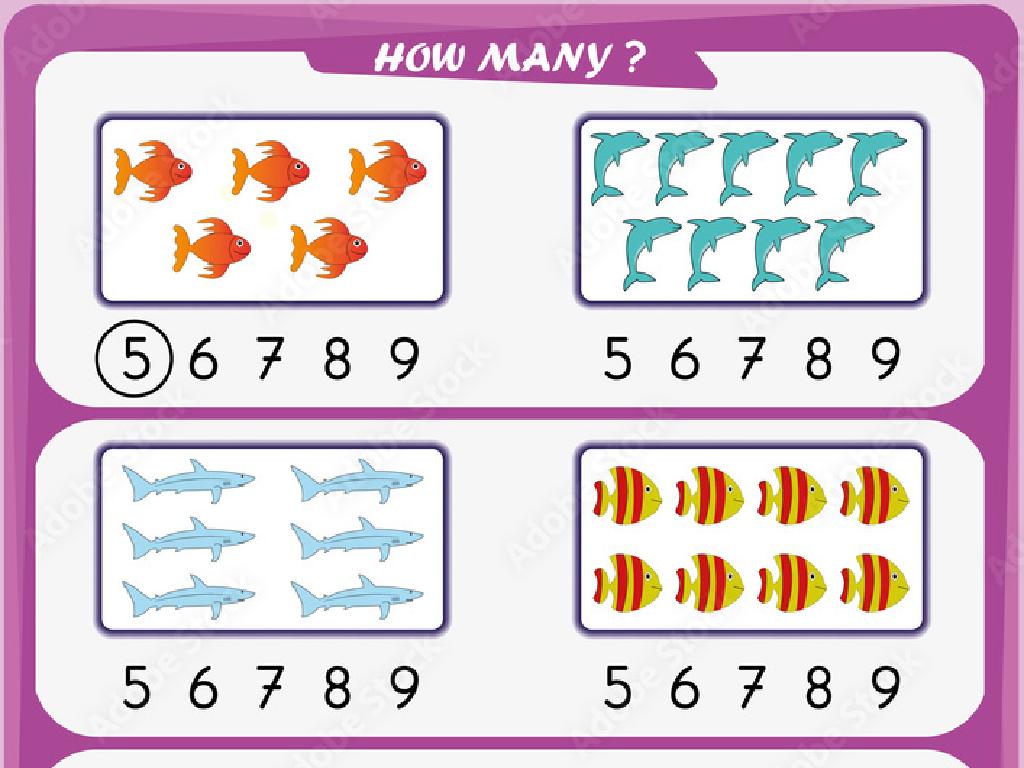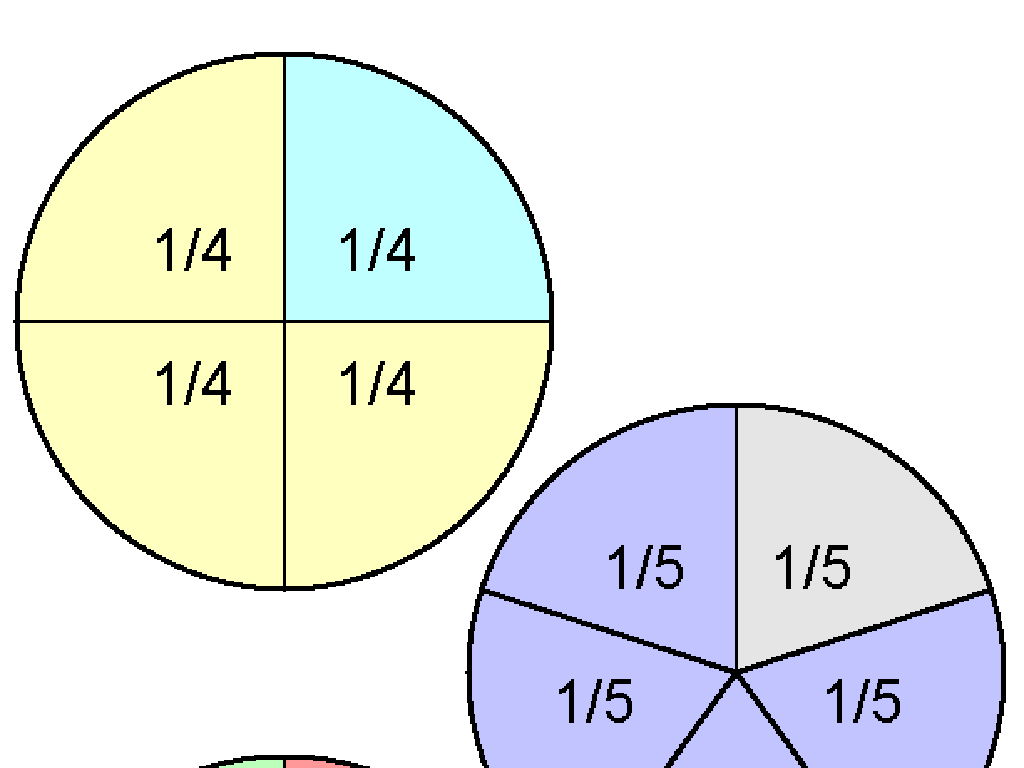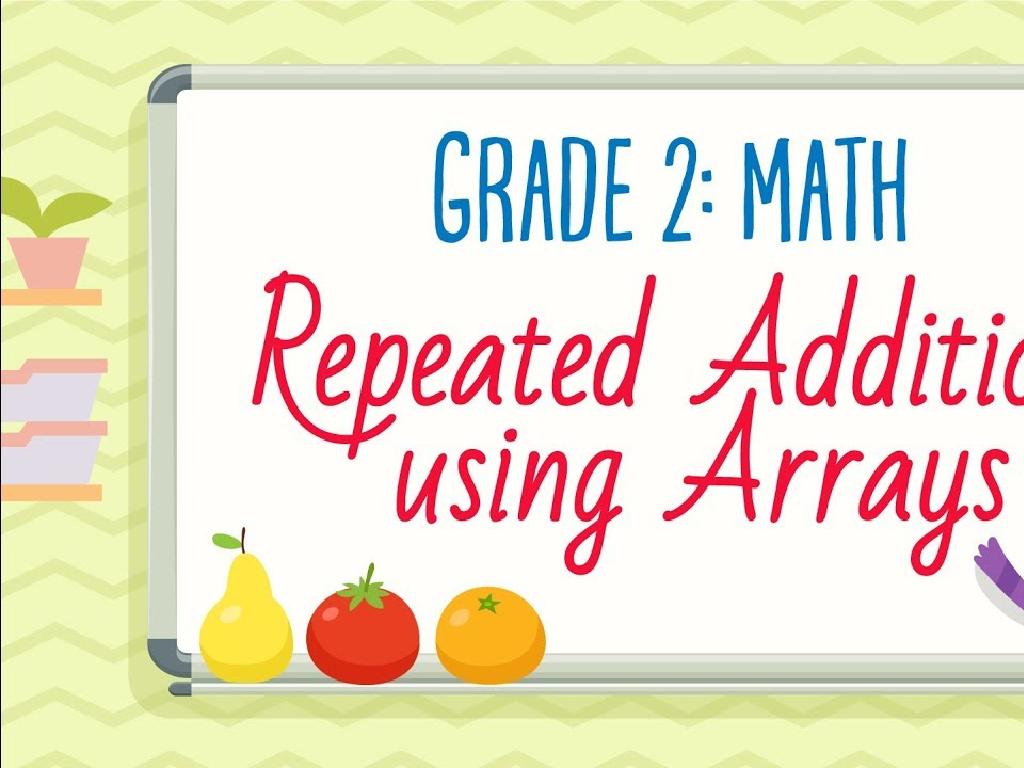Multi-Step Word Problems
Subject: Math
Grade: Fifth grade
Topic: Multi-Step Word Problems
Please LOG IN to download the presentation. Access is available to registered users only.
View More Content
Tackling Multi-Step Word Problems
– Understanding multi-step problems
– Problems that require more than one step to solve.
– Real-life importance of these problems
– Helps with complex tasks like budgeting or planning a trip.
– Identifying multi-step problems
– Look for keywords and break down the question.
– Solving multi-step problems
– Use logical steps and check work for accuracy.
|
This slide introduces students to the concept of multi-step word problems, which are problems that require more than one mathematical operation to solve. Emphasize the importance of these problems in everyday life, such as in cooking, shopping, or planning events, where multiple calculations are often necessary. Teach students to identify these problems by looking for certain keywords and understanding that the problem cannot be solved in one step. Guide them through the process of breaking down the problem into smaller, manageable parts, solving each part step by step, and then combining the solutions to reach the final answer. Encourage students to always check their work. Provide examples and practice problems to reinforce the learning objectives.
Understanding Multi-Step Word Problems
– Define multi-step word problems
– Problems requiring more than one step to find the solution.
– Contrast with single-step problems
– Single-step: one operation; Multi-step: several operations.
– Real-life multi-step problem examples
– Buying groceries with a budget or planning a party.
– Strategies to solve multi-step problems
|
This slide introduces students to multi-step word problems, which are more complex than single-step problems as they require performing several mathematical operations to reach a solution. Emphasize the difference by comparing both types with examples. For instance, a single-step problem might ask for the sum of two numbers, while a multi-step problem could involve finding the cost of items with a given budget. Use relatable scenarios like shopping or event planning to illustrate multi-step problems. Teach students to identify keywords, break down the problem into smaller steps, and solve each part sequentially. Encourage them to write down each step and check their work as they go.
Key Words in Multi-Step Word Problems
– Signal words hint at operations
– Examples: ‘in all’, ‘left’, ‘more than’
– ‘In all’ suggests addition, ‘left’ often means subtraction
– ‘Fewer than’ indicates subtraction
– ‘More than’ can signal addition or comparison
– Practice with sample problems
– Identify key words and decide which operations to use
|
This slide is aimed at helping students recognize signal words in word problems that indicate specific mathematical operations. Understanding these keywords is crucial for solving multi-step problems. ‘In all’ typically suggests addition, while ‘left’ might indicate subtraction. ‘More than’ and ‘fewer than’ can signal either addition or comparison, and subtraction respectively. During practice, provide students with sample problems and guide them to underline or highlight these key words. This will help them determine the steps needed to find the solution. Encourage students to explain their reasoning for choosing a particular operation based on the signal words they identify.
Solving Multi-Step Word Problems
– Carefully read the entire problem
– Underline key information and numbers
– Look for dates, costs, quantities, etc.
– Identify the question being asked
– What is the final result you need to find?
– Plan your steps to solve the problem
– Will you add, subtract, multiply, or divide?
|
This slide is aimed at teaching students a systematic approach to solving multi-step word problems. Start by reading the problem thoroughly to understand the scenario. Encourage students to underline or highlight important pieces of information such as numbers, units, and specific details that will be crucial for solving the problem. Next, help them to pinpoint exactly what the problem is asking for; this will be the goal they work towards. Finally, guide them to think about the operations needed to reach the solution and the order in which they should apply them. Provide examples of multi-step problems and solve them together as a class, discussing why each step is necessary.
Breaking Down Multi-Step Word Problems
– Approach problems step-by-step
– Break down the problem into manageable steps
– Solve each part separately
– Focus on one part of the problem at a time
– Example: Two-step problem
– Let’s solve a sample problem together in class
– Practice makes perfect
|
This slide is aimed at teaching students a systematic approach to solving multi-step word problems. Start by explaining the importance of not rushing and tackling each part of the problem one at a time. Use a simple two-step problem as an example to illustrate the process. For instance, if a problem involves both addition and multiplication, solve the addition part first and then the multiplication. Encourage students to write down each step as they solve it. This not only helps to keep track of their work but also makes it easier to check their work at each stage. After explaining the concept, give students a few problems to practice this method. The goal is to build their confidence in solving complex problems by mastering a step-by-step approach.
Let’s Practice Together: Multi-Step Word Problems
– Walk through a class problem
– We’ll solve a problem together on the board
– Discuss steps to solution
– We’ll break down the problem into manageable steps
– Class participation encouraged
– Share your ideas on how to solve the problem
– Students suggest next steps
– What should we do after finding the first part of the answer?
|
This slide is designed to engage the class in a collaborative problem-solving activity. Start by presenting a multi-step word problem on the board and invite the class to read it together. Encourage students to discuss and identify the different steps required to solve the problem. As you work through the problem, pause at key points to solicit suggestions from the students on what to do next. This interactive approach helps students understand the process of breaking down complex problems and promotes active participation. Make sure to acknowledge all contributions and guide the class towards the correct solution. The goal is to build confidence in tackling multi-step word problems and to reinforce the importance of a systematic approach to problem-solving.
Avoiding Common Mistakes in Multi-Step Problems
– Read the problem carefully
– Understand every part before solving
– Don’t skip steps
– Each step is crucial for the right answer
– Understand the question
– Make sure you know what’s being asked
– Always check your work
– Review your solution step by step
|
This slide aims to help students tackle multi-step word problems by highlighting common pitfalls and emphasizing the importance of a methodical approach. Encourage students to read the problem multiple times to grasp all the details. Remind them that every step in a multi-step problem is there for a reason and skipping any can lead to incorrect answers. Teach them to identify exactly what the problem is asking for before attempting to solve it. Finally, stress the importance of checking their work by retracing their steps and verifying each part of their solution. Provide examples of common errors and how to correct them to reinforce these strategies.
Independent Practice: Multi-Step Word Problems
– Attempt problems individually
– Take a step-by-step approach
Break down the problem into smaller parts
– Double-check your solutions
Review your work for any mistakes
– Ask questions if you’re stuck
It’s okay to seek help!
|
This slide is aimed at guiding students through the process of independently solving multi-step word problems. Encourage them to tackle each problem methodically by breaking it down into smaller, more manageable steps. Remind them of the importance of checking their work upon completion to ensure accuracy. Reinforce that making mistakes is a part of learning and that they should not hesitate to ask questions if they encounter difficulties. Provide detailed guidelines for the teacher to facilitate this activity, suggesting they circulate the room to offer support, provide hints when necessary, and encourage peer discussion for different perspectives on the problems.
Share and Reflect: Multi-Step Word Problems
– Share your problem solutions
– Discuss various solving strategies
– How did your classmates tackle the problem differently?
– Reflect on today’s learning
– What new methods or tricks have we learned?
– Embrace diverse approaches
|
This slide is aimed at wrapping up the lesson on multi-step word problems. Students will take turns sharing their solutions and the strategies they used to arrive at their answers. Encourage them to explain their thought process in detail. Facilitate a discussion on the different methods used by students, highlighting that there can be multiple ways to solve the same problem. Conclude the session by reflecting on the key takeaways from today’s lesson, asking students to articulate what they’ve learned and how they can apply these strategies to future problems. This reflection helps to consolidate their understanding and appreciate the value of diverse problem-solving techniques.
Class Activity: Group Problem-Solving
– Form small groups for problem-solving
– Solve a complex multi-step problem
– Work together to understand and solve the problem
– Present your group’s solution
– Share your solution with the class
– Explain the steps taken
– Discuss the reasoning behind each step
|
This activity is designed to foster collaboration among students and to apply their knowledge of multi-step word problems. Divide the class into small groups and provide each with a challenging problem that requires multiple steps to solve. Encourage students to discuss and work through the problem together, ensuring each member contributes to the solution. After solving the problem, each group will present their solution to the class and explain the steps they took to arrive at their answer. This will help students learn from each other and reinforce their understanding of solving complex problems. Possible activities could include real-life scenarios such as budgeting for a school event, planning a trip, or calculating the total cost of items bought with a discount and sales tax applied.
Homework and Next Steps: Mastering Multi-Step Problems
– Complete assigned practice problems
– Reinforce today’s lesson with extra problems
– Preview advanced multi-step problems
– Get a glimpse of upcoming complex challenges
– Practice regularly at home
– Consistent practice is key to improvement
– Keep a positive mindset
|
This slide aims to guide students on their homework, which consists of additional practice problems to solidify their understanding of multi-step word problems. Encourage them to preview the next topic, which will involve more advanced multi-step problems, to prepare them for future lessons. Emphasize the importance of regular practice at home to enhance their problem-solving skills. Maintain a supportive tone to inspire confidence and a growth mindset, reassuring students that persistence and effort will lead to mastery of the topic. Provide clear instructions for the homework and offer examples of how to approach more complex problems. Remind them that making mistakes is a part of learning and to seek help if needed.






